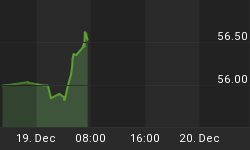Hyperinflation
The US will eventually experience hyperinflation, but "eventually" could be long after we are all dead. Therefore, rather than making the case that hyperinflation will eventually happen, it is more useful to ask the question: What is the probability of hyperinflation happening in the US within the next two years? We have asked that question every year for more than ten years, and up until now the answer has always been: So low as to not be worth worrying about. We are now asking the question again.
Cutting to the chase, the answer hasn't changed. In other words, we think that the relentless forecasters of hyperinflation will be wrong for at leasttwo more years.
To understand why hyperinflation forecasts have been wrong up until now and will probably be wrong for at least two more years it is necessary to understand that hyperinflation has three basic prerequisites. First, there must be a large increase in the supply of money. Second, there must be a large decline in the general desire to hold money due to a belief that money will quickly lose purchasing power in the future. Third, when the large decline in the general desire to hold money leads to a perceived shortage of money by causing prices to rise at a much faster pace than the money supply, the central bank must react to the perceived shortage by further increasing the pace at which new money is created. This precipitates the downward spiral in money purchasing power thatis commonly referred to as "hyperinflation".
As things now stand, only the first of these prerequisites is in place. There has been a large increase in the supply of money, but the general desire to hold money has remained high. That the general desire to hold money has remained high is largely due to the excessive debt levels and the associated need toobtain money to meet repayment obligations.
Today's excessive debt levels stem from decades of central-bank-sponsored money-supply and credit inflation. The rampant prior inflations of money and credit have created a strong deflationary force, but central banks continue to resist this force by directly creating, or indirectly promoting the creation of, more money and credit. This only adds to the deflationary force, leading to even greater central-bank-generated money and credit inflation, and so on. The central banks will almost certainly continue to resist the deflationary force (the reason why the 'deflationists' will continue to be just as wrong as the 'hyperinflationists'), but the more concerted their resistance the soonerthe eventual hyperinflation will happen.
In any case, the desire to hold money is not going to shift from high to low overnight. It will take years. It could even take decades. Moreover, those who are paying attention will see clear warning signs in the financial markets long before the purchasing power of money takes a nosedive. One of the clearest signals will come from the bond market -- in the form of a large rise in long-term interest rates and a concurrent large rise in long-term relative to short-terminterest rates.
Capital Controls
Those who are paying attention will see plenty of warning signs long before hyperinflation or total monetary collapse become imminent threats. Right now there are no such warning signs. Consequently, it makes no sense to be preparingfor US hyperinflation at this time.
Capital controls (government restrictions on getting money into/out-of the country) are a different story, as they could be imposed at any time without warning. The probable justification will be national security (for example, the "war on terror") or the "war on drugs". People with significant financial assets should therefore already be preparing for the capital-controls risk by diversifying their assets internationally. Also, everyone (especially US citizens), including those who don't yet have significant financial assetsto protect, should have a second passport.
We aren't offering a free trial subscription at this time, but free samples of our work (excerpts from our regular commentaries) can be viewed at: http://www.speculative-investor.com/new/freesamples.html















